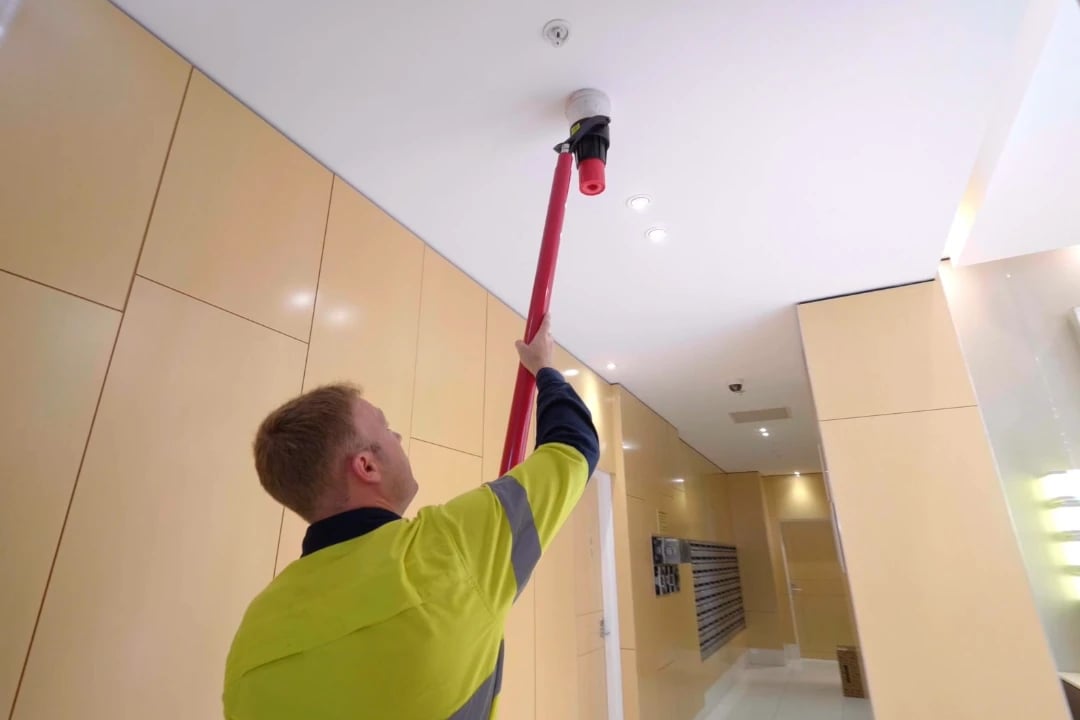The potential of remote fire alarm management in reducing false alarms
In the field of fire safety, the fire alarm signal is a critical connection between fire systems and the necessary rapid response to prevent...

The safety of people and property is a core responsibility of all employers, facilities managers, and building owners. From a fire safety point of view, this means ensuring fire protection systems are compliant with appropriate installation and maintenance standards as well as various regulations and legislation. Often, this legal obligation requires these employers, building owners and property managers to demonstrate that they have taken reasonable steps to reduce fire risk and ensure that occupants can safely evacuate in the event of a fire.
In residential buildings, in particular, the Fire Safety Act 2021 and the Fire Safety (England) Regulations 2022 place onerous new responsibilities on building owners and Responsible Persons to ensure that all relevant laws and regulations are being met, from the installation of a fit for purpose fire system to maintenance, testing and monitoring. Whereas traditionally, all of this would have been kept in paper records and fire logbooks, the new expectation is that a detailed record of all actions should be available to current and future building managers (the Golden Thread). Physical records will always have the possibility that they can be damaged or misplaced. Put simply, the paper trail can no longer only be on paper; it needs to be in the cloud.
Fire protection system compliance is not a simple task for maintenance providers or facilities managers. The complexity stems from multiple fire protection standards or regulations, systems provided by different manufacturers, building management teams across several locations, and managing various fire protection maintenance providers or system integrators.
Beyond fire system complexity, it’s reasonable to suggest that compliance reporting requirements have also increased in recent years. Groundbreaking reports like the UK’s ‘Building a Safer Future’ review of fire safety by Dame Judith Hackitt (2018) made recommendations regarding digital record-keeping to ensure the ‘Golden Thread’ of building information persists and is secure. A key finding was that the handover of information from the design and installation phase to the occupation and maintenance phase had significant issues. It was often incomplete, held in paper form and therefore not broadly accessible.
The increased costs associated with fire protection record keeping and proof-of-test reporting contribute to rising building management costs. Facilities managers will also attest to similar increases in paperwork with almost every system across their buildings, from lifts and HVAC to security and access control systems.
Can these developing fire safety and compliance requirements be satisfied without increasing cost and complexity?

Digital transformation takes many forms, and although it’s often associated with a project or specific business need, today, it has become a regularly deployed management tool to address rapidly changing business conditions. An obvious case in point is the response to the pandemic over the past few years, where digital transformation was commonly used to adapt to the crisis. From the ubiquitous rise of ‘Zoom’ meetings and QR codes to contactless parking tickets, digital transformation projects have become commonplace.
In its most simple form, digital transformation seeks to operationalise the use of digital technologies to improve business workflows. By this definition, fire protection maintenance systems have been on a digital journey for well over ten years. For example, using mobile computing platforms (e.g. smartphones and tablets) in the field has enabled fire techs to accurately record test and preventative maintenance results as required by the standards. In addition, moving from paper-based systems has increased the integrity of this data while providing a platform to compare results versus baseline data.
Likewise, office or operations managers coordinating field tech teams have significantly benefited from digitising their workflows. This includes timely invoicing, robust defect management, flexible scheduling, and enhanced customer reporting. High-speed and widely available mobile data networks (e.g. 3G, 4G, and now 5G) have, for the most part, linked the office to the field to allow near-live data transfer that increases productivity, transparency and customer satisfaction.
The fire industry globally has embraced these new technologies to offer technical solutions to traditional problems, including monitoring fire systems, remote testing, fault logging and maintenance reporting. Companies like FireMate have invented hardware and software products that work in unison with fire panels and other systems. This makes life easier for fire installers, maintenance service providers and their clients by helping to provide a digital log while also speeding up the detection and alerting process in a genuine fire incident.

Despite the benefits of digital transformation for fire protection maintenance providers and installers, there seems to be a significant gap between record keeping today and the vision that Hackitt’s report requires. Hackitt suggests that the fire industry could learn from the aerospace or automotive industries. The goal is a consistent approach to data design, collection, and transmission.
Potentially an open-systems approach makes sense. The famous Open Systems Interconnection (OSI) model is not rocket science, even if some of the concepts did originate from NASA and ARPA. The big-picture simplicity of the OSI model provides a way for disparate systems to talk to each other. The model has been successful for over 30 years in the broader information systems marketplace.
From the point of view of live reporting and compliance management, technological advancements in fire alarms, fire panels, smoke detectors, pumps and so on have mainly been proprietary in nature, with each manufacturer going their own way. The author recommends an open systems or multi-vendor approach to connecting fire assets. This would provide a platform for the type of reporting and digital records that the Hackitt report recommended being developed.
In the UK context, fire alarm signalling equipment and similar equipment in other countries exist today and connect fire systems to alarm receiving centres (ARCs). Remote monitoring systems that offer real-time visibility of fire alarm and protection systems are increasingly being deployed. Some are proprietary, working only with a single fire panel; others take a multi-vendor (open) approach and connect to panels from many manufacturers. The key to the design of these systems is that they must be non-intrusive add-ons to fire panels that do not impact fire alarm connectivity back to fire brigades (or the ARC).
These remote monitoring systems provide at least two key capabilities to move the industry toward Hackitt’s digital record goals. The first is the detailed notification of fire panel events, and the second is the ability to capture commissioning and maintenance activities to streamline reporting digitally.
Remote monitoring systems notify interested parties using a combination of smartphone apps, email messaging, and browser-based portals. A vast majority of property owners and facilities managers have limited or no real-time visibility of the fire protection systems in the buildings they manage. If a fire alarm is triggered, and they are off-site, they will probably hear about the alarm from their tenants or the building occupants. Knowing that a fire alarm has been triggered or that a particular asset is offline or faulty enables property managers to know what’s happening in their buildings and offer proactive customer service to building occupants.
Fire protection systems integrators or maintenance service providers can likewise benefit from knowing that the whole system or just a particular asset, like a smoke detector, is offline or faulty. This knowledge enables them to offer enhanced levels of service to property owners and managers, including sending a suitably qualified fire tech to the site to rectify the fault with foreknowledge of the type of fault.
Digital capture and reporting of commissioning and maintenance activities
Fire protection system installers and maintenance service providers usually have little or no visibility of the current state of fire assets they are installing or maintaining unless they are standing next to the fire panel (or be in communication with someone next to the panel). For example, when a fire professional installs or maintains a smoke detector, the fire panel will be isolated. When the detector is tested with smoke, the detector and the fire panel will alarm, and both test results will be recorded automatically. Currently, this requires a fire professional to be monitoring the fire panel in addition to their colleague at the detector. This is where modern remote monitoring systems shine, enabling installers and maintenance service providers to test equipment and have the results logged immediately in a database. This increases productivity and the integrity of the test data.
The ongoing digital transformation of fire protection installation and maintenance activities via remote monitoring are significant steps to creating enduring digital information records across buildings.
Nimbus Fire Alarm ManagementFire Protection Maintenance Software
References
- Building a Safer Future report (2018).
- This article was also published in UK Fire Magazine (2023).

In the field of fire safety, the fire alarm signal is a critical connection between fire systems and the necessary rapid response to prevent...

The safety of people and property is a core responsibility of all employers, facilities managers, and building owners.

Social media can help you engage with your prospects, customers, suppliers, and industry colleagues.